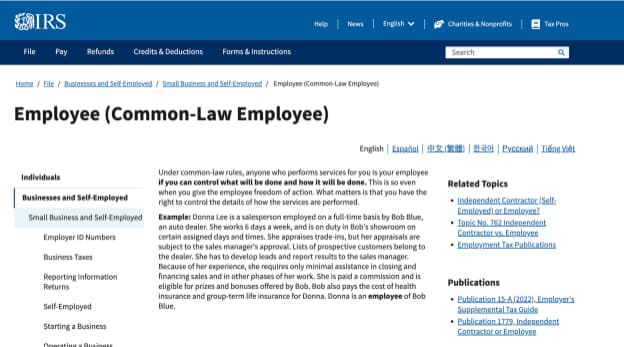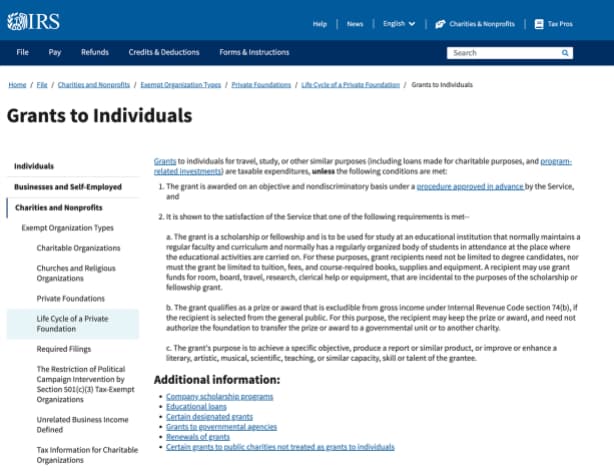How to Fund a Museum Paid Internship

Rachael Cristine Woody
This is the last post in the paid internship series. To learn more, please join me for our How to Build a Museum Paid Internship Program webinar today at 11 a.m. Pacific, 2 p.m. Eastern. It is not too late to register via the link at the foot of this post.
We began by covering why paid internships are important, how to create a meaningful internship experience, and how to calculate appropriate compensation for an internship. In this final post of the miniseries, we focus on how to fund and structure an internship program.
Disclaimer: I am not an HR, legal, nor tax specialist. Laws specific to your state as well as policies specific to your organization should be sought out and referenced when building your own paid internship program.
Strategies for Funding a Paid Internship Program
Fundraising avenues for paid internships are similar to that of general museum fundraising. In an ideal world, a paid internship program would be embedded as part of regular museum operations and, therefore, included in the operational budget. But, to get started and/or if your museum’s finances are struggling to cover operational costs, it may be wise to consider additional options, such as:
- Fundraisers
- Company sponsors
- Donors
- Grants
As you review these options it may be worth coordinating your ideas with your development staff or executive board. Your ideas may be able to tap into (and support) broader initiatives and it can help you gain buy-in from your peers.
The Appeal of Paid Internships to External Funders
Paid internships tend to be very attractive to external funders and the right partner could become a regular funder or contributor to the internship program. Internships also offer a discrete project with defined parameters for success and are popular to showcase via museum media channels as they offer a fresh perspective to connect with the audience. Finally, as the internship is temporary in nature and the duration is just for a few months, the total price tag is relatively affordable.
How Programs Can be Financially Formatted
In other words: How can you bring an intern onboard at a museum and financially compensate them? When offering compensation there are three (3) mechanisms to do so: pay them as an employee, pay them via an award or stipend, or pay them via contract. How these are defined and the criteria involved will include IRS laws, HR policies at your museum, and any additional state or local laws. As you consider these avenues, please coordinate with you applicable HR, accountant, legal counsel, etc. to ensure that the avenue you pursue isn’t against the law or museum policy, and that it doesn’t open the museum up to unnecessary risk.
Payment Mechanisms Available:
- Employment
- Award (stipend)
- Contract
Employment
Employment tends to be a rare option as there are potential additional costs the museum will incur. For example, the museum may need to also offer the employed intern benefits. However, there are some settings where this may make sense. Here’s a glance at the IRS definition for “Employee” (below).

Employment may make sense if:
- You’re from a for-profit organization.
- The internship is intended to last 12 months or longer.
Implications of offering employment:
- Employees that meet certain criteria are entitled to employee benefits, including unemployment.
- Employer and Employee taxes will come out of the amount paid.
Award
Granting compensation to an intern as an award or stipend is the most common payment mechanism found in the museum field. Here’s a glance at the IRS definition for “Grants to Individuals” (below).

Awards may make sense if:
- You’re from a non-profit organization.
- The internship is intended to last 12 months or fewer.
- You’re able to solicit applications an award on “an objective or non-discriminatory basis” where the award’s purpose is to achieve an objective.
Implications of offering awards:
- An award is given. It isn’t earned in a traditional “clock hours” sense.
- It’s recommended you create a program criteria and evaluation rubric to meet IRS regulations.
- The internship isn’t subject to employee benefits and, to some extent, policies.
- The organization must issue a 1099 at the end of the calendar year.
- Less taxes are taken out that the awardee (intern) is responsible for.
Contract
Contracts are another avenue to consider if employment is not an option, and an award structure isn’t a good fit.
Contracts may make sense if:
- The internship is intended to last a minimum of 6 months.
- You don’t want to hire an employee, but also don’t meet the IRS criteria to provide an award.
Implications of offering a contract are:
- The organization will likely need to go through an RFP/Bid process and may not receive bids from persons looking for a paid internship experience.
- The contractor isn’t subject to employee benefits and, to some extent, policies.
- The organization must issue a 1099 at the end of the calendar year.
- The contractor (intern) is responsible for all taxes — which means you need to compensate them MORE than you would an employee.
Conclusion
Figuring out the money portion is honestly a large part of the advocacy battle. It may take time to achieve your vision of a robust and healthy paid internship program. And that’s OK. And if that frustrates you (as it does me)—that’s OK too. Keep pushing that Overton window. The more an idea is verbalized, the more familiar people become, and the less resistance they feel toward the idea over time.

Rachael Cristine Woody
To learn more, please join us for How to Build a Museum Paid Internship Program, TODAY, October 25, 2023 at 11 a.m. Pacific, 2 p.m. Eastern. (Can’t make it? Register anyway and we will send you a link to the recording and slides afterwards). Register now or call 604-278-6717.
Never miss another post. Subscribe today!
Similar Posts
Museum Collections Online with Accessibility Principle 2: Operable
Compliance with WCAG Version 2.1 Principle 2: Operable
Museum Collections Online with Accessibility Principle 1: Perceivable
Compliance with WCAG Version 2.1 Principle 1: Perceivable, affecting information published from museum CMS to an online portal; expert guidance
Accessibility Standards for Museum Collections Online
A museum’s compliance with the ADA Title II 2024 update has benefits for its online content and for the museum’s community of users.
Museum TrendsWatch 2024: Digital Twins and Doom Loops & Combatting the Loneliness Crisis
Digital Twins is the construction of a digital surrogate for a person, place, or thing—one of several new concepts and trends in the museum sector.




Leave a Comment
Comments are reviewed and must adhere to our comments policy.
0 Comments